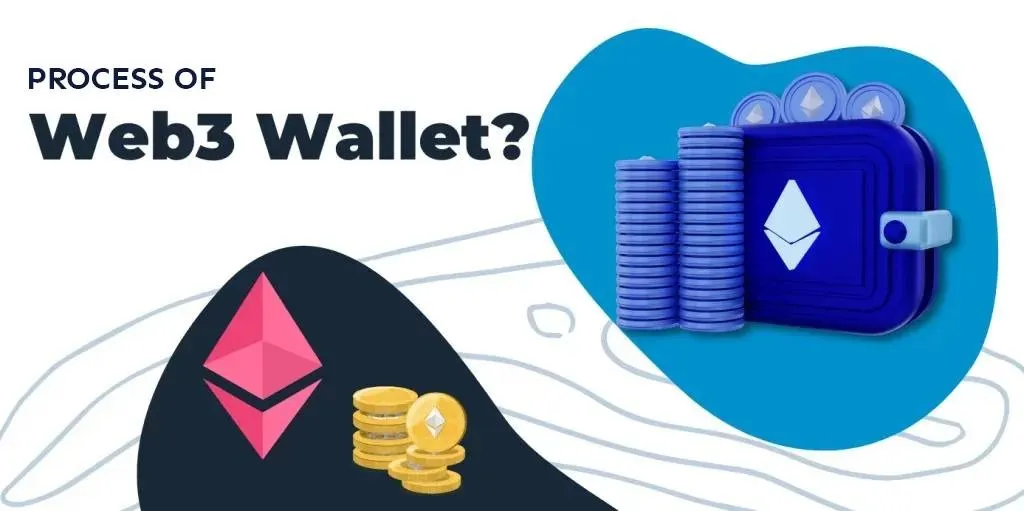
WEB 3 Wallet: Everything you need to know

Web3 wallet in cryptocurrency: What is it and what is it for?
In recent years, there has been an active development of blockchain technologies, which leads to the emergence of new tools for working with decentralized applications and cryptocurrencies. One such tool is the Web3 Wallet, a modernized version of a wallet designed to interact with blockchain applications and securely store and use digital assets.
In this article, we will take a closer look at what is meant by the term Web3 wallet, how it functions and what its purpose is.
Types of WEB wallets and their differences

Web wallets vary depending on the technologies used in them and the time of their creation. They have evolved throughout the history of the Internet, covering stages from WEB 1.0 to WEB 3.0.
WEB 1.0
WEB 1.0 is the initial stage of the internet when users could only browse the available information. At that time, cryptocurrency wallets had not yet been developed, as the idea of cryptocurrency was just beginning to take shape.
WEB 2.0
WEB 2.0 is an era of interaction, where users not only consume, but also create content. The era was marked by the emergence of the first centralized, third-party managed cryptocurrency wallets in the form of exchanges. These wallets provided convenient to use, but their functioning depended on centralized servers, which negatively affected user privacy and security.
WEB 3.0.
WEB 3.0 is a new era of decentralized internet, giving users total control of their assets and data without third parties. Web3 wallets enable secure and direct interaction with blockchain-based applications. For example, popular applications like Trust Wallet, Rabby Wallet or MetaMask provide opportunities for users to anonymously interact with decentralized platforms and applications (dApps) and manage their digital assets while maintaining their privacy.
Find more information about blockchain and cryptocurrency with a selection of books published in an article from our blog - Top 10 books on blockchain and cryptocurrency
What is a Web3 wallet for?
Web3 wallet is used to store digital currencies and work with decentralized applications. It provides users with the ability to sign transactions, participate in voting to manage decentralized projects, and work with DeFi (decentralized finance), NFT and other blockchain services.
Such a wallet provides the ability to fully manage assets, as access to them is protected by a unique private key.
Web3-focused blockchain projects

There are numerous Web3-focused blockchain projects. Some of the most significant ones include Ethereum, Polkadot, Solana, Binance Smart Chain, Avalanche, Cardano, Litecoin and Ripple, which support the development of decentralized applications. In addition, there are solutions such as Chainlink and Filecoin that provide the necessary infrastructure for Web3 applications. These initiatives contribute to a decentralized network, opening up opportunities for users to create and use innovative services.
To learn more about the impact of Web3 on the cryptocurrency industry, check out our blog article - The Impact of Web3 and the meta universe on cryptocurrency markets
How to create a Web3 wallet?
Creating a Web3 wallet is easy and usually requires installing an extension in a browser or downloading an app on a mobile device. Once the program is installed, the user needs to create a new wallet and save its seed phrase (mnemonic phrase). This phrase is extremely important as it allows the user to regain access to the wallet if needed. Once these steps are completed, the wallet is ready for use: users can store their crypto-assets and interact with dApps.
Pros and cons of Web 3.0 wallets
Pros:
- Complete control over your own resources.
- Protection of personal data and the possibility of anonymous interaction.
- There is a function of connecting the wallet to decentralized applications.
- High degree of security due to the presence of private keys.
Disadvantages:
- The wallet owner is responsible for the security of their private keys themselves.
- Loss of a seed phrase will result in inability to enter the wallet and thus financial losses.
- Some wallets from the Web3 ecosystem have limited features and can be difficult for beginners to master.
Conclusion
Web3 wallets are key components of the decentralized economy and next-generation internet. They provide users with the ability to interact with blockchain applications and securely store their digital assets, which opens up broad horizons in decentralized technology and cryptocurrency. As Web3 grows in popularity, the technologies will become more accessible and feature-rich, facilitating better management of people’s digital assets.
Frequently Asked Questions
1. How does Web3 wallet differ from Web1.0 and Web2.0 wallets?
The main difference lies in the functionality and degree of interaction with decentralized systems. While Web1.0 and Web2.0 wallets were limited to storing and transferring funds, the Web3 wallet provides full access to a variety of decentralized applications and services, creating a broader user experience in the world of cryptocurrencies.
2. What blockchain projects are actively developing in the Web3 sphere?
Projects like Polkadot, Ethereum, Solana, Chainlink and TON are actively developing offering decentralized blockchain-based applications (dApps).
3. How to create a Web3 wallet and start using it?
To create a wallet you can choose, for example, MetaMask or Trust Wallet, install it and create an account, saving the recovery phrase. After funding your wallet with cryptocurrency, you will get access to dApps.